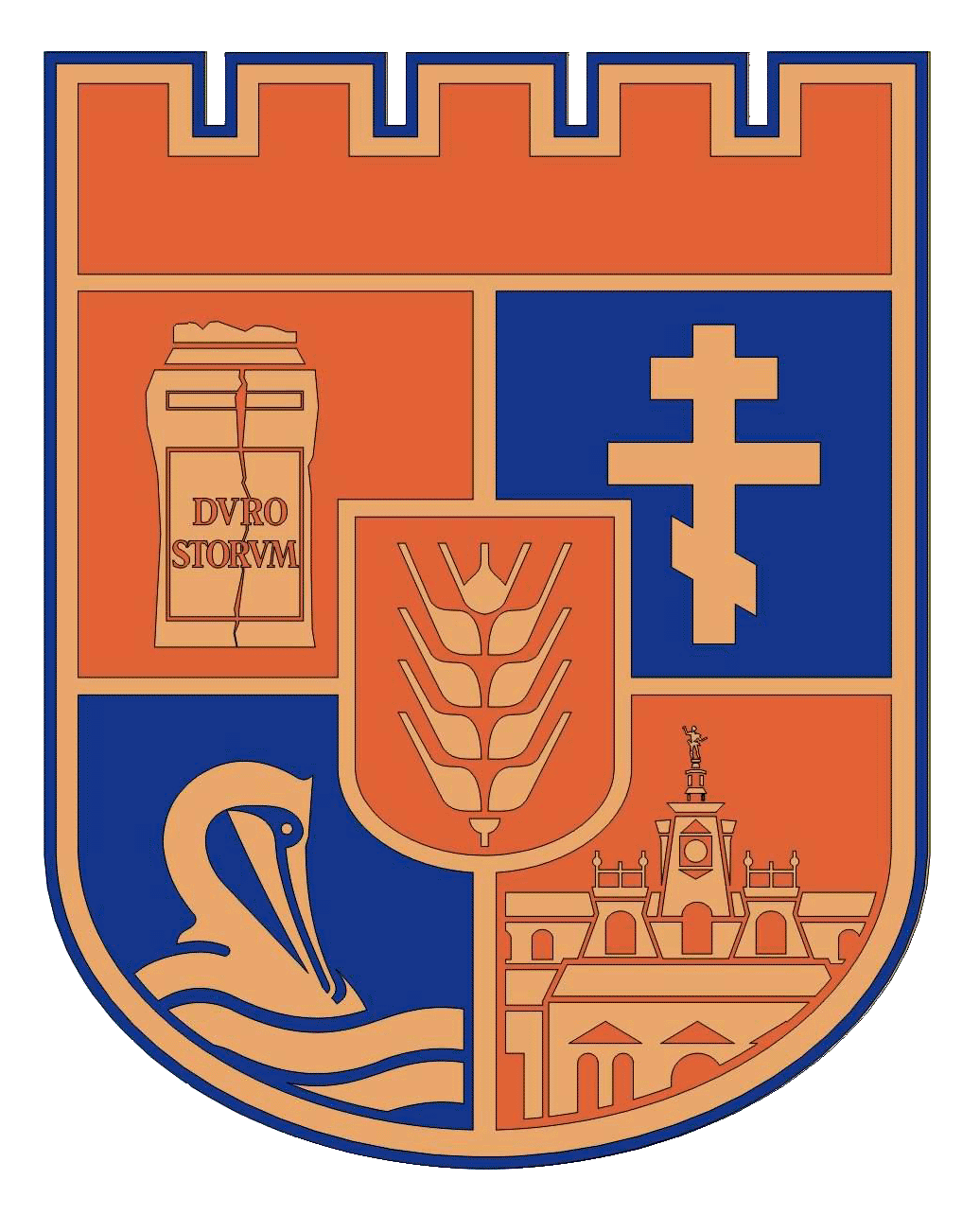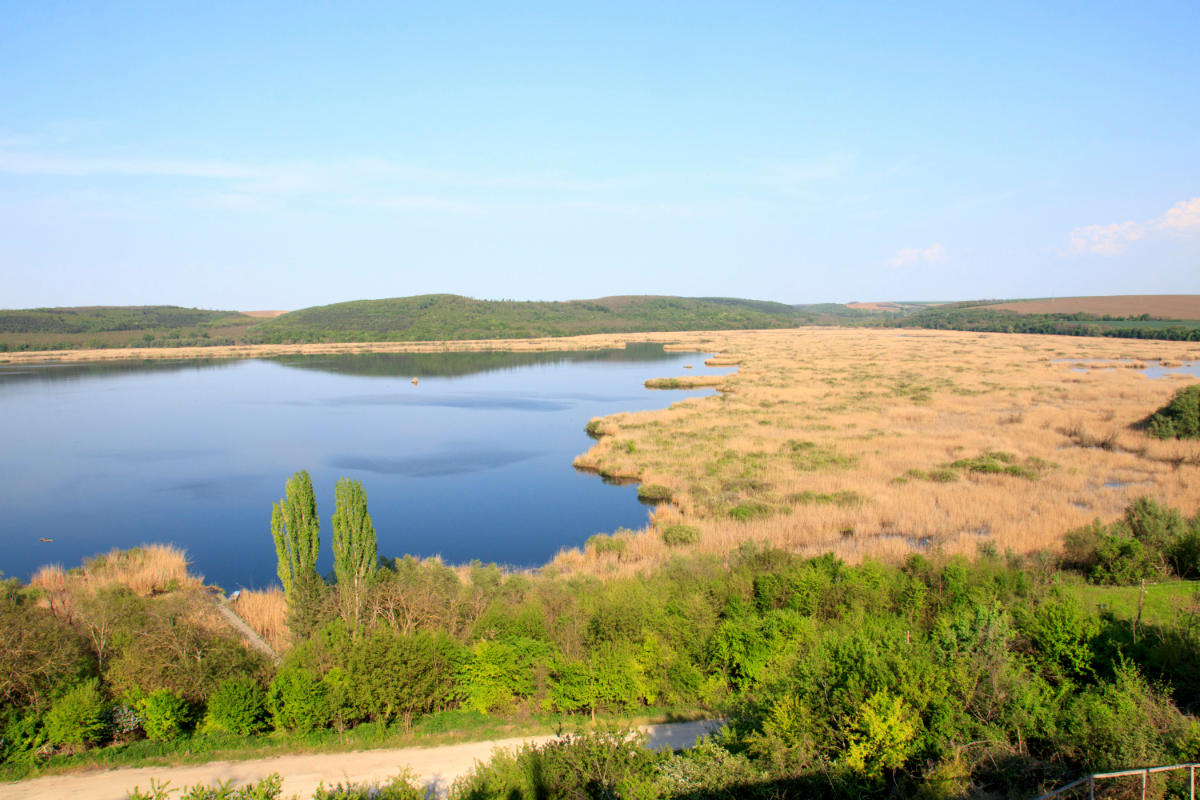Srebarna Biosphere Park
Category ParkLOCATION
The Srebarna Biosphere Park is located near the village of Srebarna, Silistra Municipality. Situated 2 km south of the Danube River and 16 km west of the town of Silistra. It is located 429 km away from the capital Sofia. There is a bus three times a day leaving from the Sofia Central Bus Station to Silistra, as well as a train three times a day from the Sofia Central Railway Station.
Ten buses daily travel to the village of Srebarna along the Ruse-Silistra route.
DESCRIPTION
The fame of the Srebarna Biosphere Park is linked to the fact that it is located exactly on the migratory bird way from Europe to Africa - Via Pontica and, on the other hand, to the unique and diverse species of waterfowl inhabiting it. The Park covers Lake Srebarna and its surroundings - about 660 hectares of guarded area and a buffer zone of about 540 hectares.
HISTORY
The first Bulgarian who was particularly interested in this zone was Alexi Petrov who visited the Park in 1911. In a few years he returned to explore the area and the birds. During this time, in 1942, the site was declared a kennel for waterfowl birds, and in 1948 it received the status of a bird Park. Bulgarians were not the only ones impressed by this beautiful place. It was also visited by the Austrians Felix Kanitz and Edward Hodek, who even wrote an article about the Park titled "The Home of the Migrants". In the article he explains to his fellow countrymen how incredible this place is in the beautiful and little known Bulgaria. Another researcher who visited Srebarna was Otomar Reiser. He is the author of the book "Materials of the Bulgarian Ornithus", the second volume of the book is dedicated to the Bulgarian fauna. Because of the rare and vanishing species of birds in 1983. Lake Srebarna is included in the list of UNESCO World Heritage Sites. In 1965, the Park was included in the list of Europe's most important wetlands, and ten years later, in 1975, it was declared a wetland under the Ramsar Convention, an international agreement on biodiversity conservation. In addition, the Park is also included in UNESCO's World Biosphere Park Network, as well as in the list of important ornithological sites in Europe. The aim is to pPark the unique biodiversity, which has been known to the Bulgarian and European scientific community since the beginning of the twentieth century.[1]
The Park maintains 22 rare, vulnerable or endangered species of animals and plants according to the European Red List of Globally Endangered Animals and Plants and 149 species according to the Red Data Book of Bulgaria.
There are 41 species of mammals, 11 species of reptiles and 10 amphibian species, 24 species of fish, and the thing with which the Srebarna Park is most famous - 221 bird species nesting here. These include dalmatian pelican, small cormorant, shiny ibis, spoonbill, mute swan, white-eyed dagger, little white-fronted goose, red-breasted goose, gray goose, duck, bearded reedling. The only traditional breeding nest of a great egret is located there.[2]
The Park is also rich in plants, has a reed and 139 other species of plants, 13 of which are rare and protected from extinction. Only there you can see a slender toad, a gray and red willow and many others.
The floating reed islands are another interesting thing that can be seen in Lake Srebarna. These islands are called “kochki” by the local population, they never get flooded, because they follow the vertical movement of the water. This makes life easier for the birds that inhabit the lake because they nest on these moving islands.[3]
In January 2018, eagles were spotted on the territory of the Park. Predatory birds use the Park as a food base. Birds eat large fish, geese and small ducks. Sometimes they take away the prey of the eagle fisherman and other fish eating species. They also chase birds that are diving underwater. They nest in old, tall trees around ponds.[4]
A Natural History Museum has been built in the Park today, where you can see the stuffed inhabitants of the lake. Another interesting attraction is the possibility for tourists to watch the birds by means of a video camera placed in the lake. An eco-path is also created around the Park, where visitors can enjoy the pleasant view from the specially built observation grounds or relax in the leisure arbors.
UNESCO approved the announcement of the reserves "Srebarna", "Central Balkan", "Red Wall" and "Uzunbujak" for biosphere parks. The decision is made by the Intergovernmental Coordination Council of the Man and the Biosphere Program, whose 29th session took place in Paris from 12 to 15 June 2017.
The Council confirmed that the four biosphere reserves meet the requirements and principles of the Seville Strategy. Their nomination was supported by local communities and responsible state institutions. Biosphere parks are successful models for harmonious coexistence between man and nature. Srebarna Biosphere Park is one of the sites of UNESCO of world significance.
SITE SIGNIFICANCE
The Srebarna Biosphere Park is located exactly on the way of the migratory birds from Europe to Africa - Via Pontica. Srebarna is listed in the Register of Protected Areas by Council of Ministers Decree. Lake Srebarna is included in the list of UNESCO World Heritage Sites and in the list of important ornithological sites in Europe (protected areas of the national ecological network within the meaning of the Biodiversity Act).
VISITOR INFORMATION
The Park has a large parking lot and is accessible for disabled guests. Photographing in the Park is allowed, but in the museum photographing costs 5 lv. The Natural History Museum has two guides who speak English.
Entrance fees:
Children under 7 years - free of charge
Students – 1 lv
Adults – 5 lv
People with disabilities – 1 lv
Schedule
From 1 April to 30 September - 08:00 - 18:00 (every Thursday free of charge)
From 1 October to 30 March – 08:00 - 16:00 hours (Saturday and Sunday – day off)
Contacts:
E-mail: museum_srebarna@abv.bg
Phone: 08677/24 69
https://www.facebook.com/biosferen.rezervat.sreburna/
SITE CLASSIFICATION
Biosphere Park, UNESCO site.
[1] Az-deteto.bg. <http://www.az-deteto.bg/rezervatat-srebarna-domat-na-pelikanite-i-drugi-unikalni-ptitsi/12952/view.html>(24.04.2018)
[2] Poseti.guide-bulgaria.com. <http://poseti.guide-bulgaria.com/a/844/sreburna_natural_reserve.htm> (24.04.2018)
[3] Az-deteto.bg. и <http://www.az-deteto.bg/rezervatat-srebarna-domat-na-pelikanite-i-drugi-unikalni-ptitsi/12952/view.html>(24.04.2018)
[4] Actualno.com. <https://www.actualno.com/goodnews/8-morski-orli-sa-zabeljazani-v-rezervat-srebyrna-news_657581.html>(24.04.2018)




